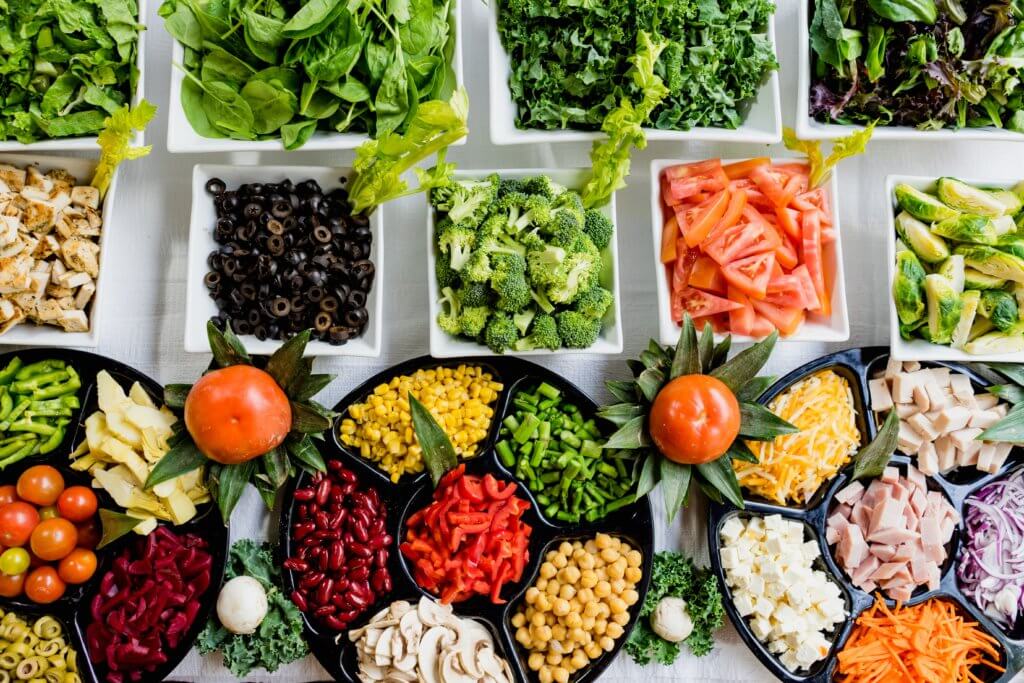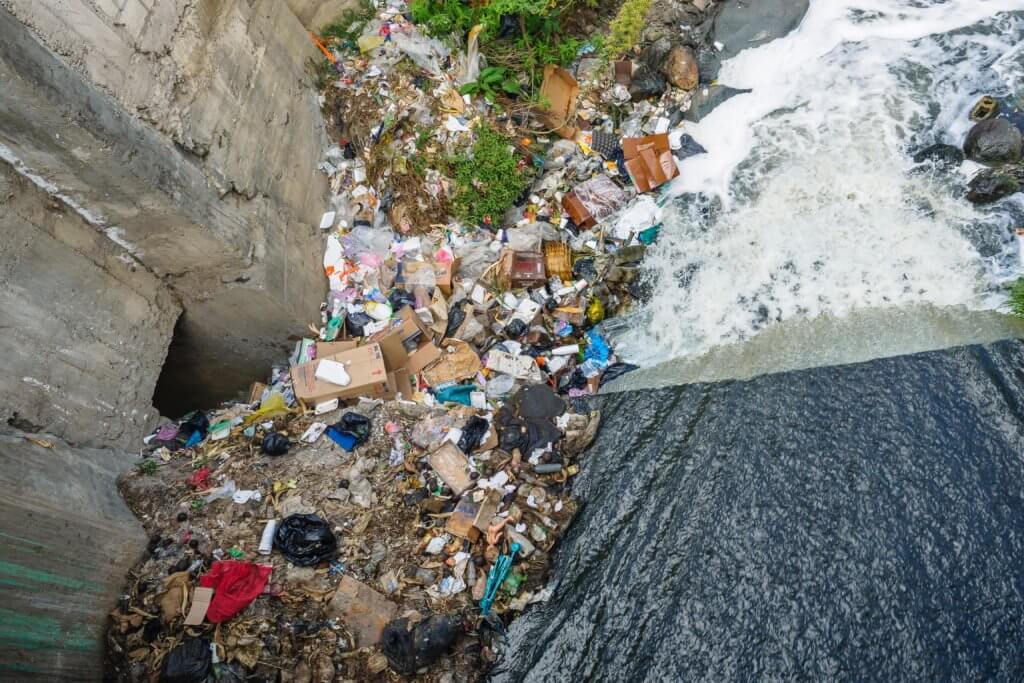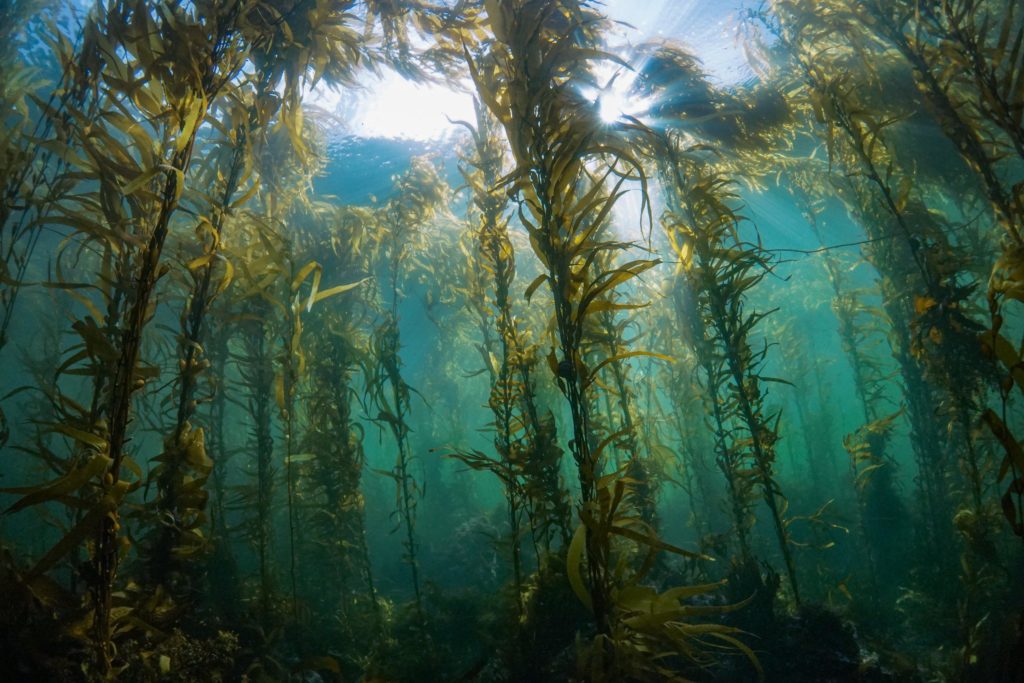Menu
The University of Tasmania (UTAS) has a range of initiatives to make our campus more eco-friendly, including:
All of the ways that UTAS seeks to be a leading sustainable university is publicly shared in the Sustainability Tracking, Assessment & Rating System (STARS) website.
The University of Tasmania (UTAS) is very much working hard to help reduce Tasmania’s carbon footprint through a range of actions.
UTAS became the second carbon neutral certified university by the Commonwealth Climate Active Carbon Neutral Standard in 2016 and in 2023 a third university in Australia has achieved this. Joining Race to Zero in early 2021 supports our commitment and recognises the climate emergency. Already carbon neutral, UTAS meets all Race To Zero criteria (pledge, plan, proceed, publish).
UTAS has reduced emissions even before these public commitments. Key initiatives include: complete fossil fuel divestment in 2021; reduced embodied carbon emissions in new buildings; transitions from natural gas to electric; all new developments solar power ready and many buildings now have solar panels; 13 years of supporting transport mode shift to more sustainable options such as bus, bike, carpooling and car sharing; and our efforts to reduce waste to landfill. While emissions reductions are already embedded in energy, transport and waste plans, our Emissions Reduction Strategic Plan 2022-2030 requires a minimum 50% reduction in total emissions by 2030. This will be accomplished by focusing on 15 emission sources with 42 specific actions. Remaining emissions are offset through domestic and international projects with environmental and social co-benefits, delivering a zero net emissions UTAS from 2016. We produce publicly available greenhouse gas emissions inventories every year as well as Public Disclosure Summaries for government websites.
Beyond Climate Active/Race to Zero related initiatives, UTAS’s climate action also includes research, learning and teaching, and engagement, with various internal and external (collaborative partnerships) groups working in these areas, such as:
Climate Active information here: https://www.climateactive.org.au/
Race to Zero information here: https://racetozero.unfccc.int/
UTAS Greenhouse Gas Inventories available here: https://www.utas.edu.au/about/sustainability/facilities-and-operations/greenhouse-gas-emissions
UTAS Public Disclosure Summaries available here: https://www.climateactive.org.au/buy-climate-active/certified-members/university-tasmania
A biome is typically a large ecosystem that shares common environmental characteristics that help differentiate them from other ecosystems/biomes. An example is the temperate rainforests of Tasmania, which are a distinct biome compared to tropical rainforests found in Queensland.
Almost all biomes are vulnerable to climate change. The nature and extent of this vulnerability changes across biomes, and also across different parts of world that have varying levels of other human induced threats. Some of these other threats include things like land clearing, introduced species and altered fire management practices. These threats can act cumulatively along with a changing climate to increase the vulnerability of that biome over and above what can be attributable to climate change. For example, climate change increases the vulnerability of temperate rainforests of Tasmania to fire, but this vulnerability can be further increased with certain forms of land use changes, such as with forestry and changed fire regimes.
My work is focussed on the wetlands biome, which is also highly vulnerable to climate change combined with other human impacts. In one recent example in Moulting Lagoon on the east coast of Tasmania, a large extent of wetland plants died due most likely to unusually high rainfall in 2022, the highest record of total rainfall for the last 62 years. Similar losses due to such ‘freak weather’ events are being reported from biomes across the world, further highlighting the need to take more urgent and stronger action on climate change.
There are 195 countries in the world. Australia is sixth largest country and takes 55th place in the world in terms of our population density. Despite relatively low population density we are in the top 15 countries in terms of our CO2 emissions per capita – that is how much emission we produce per each person in the country. Global average is 4.72 tonnes annually per capita while we are responsible for 16.3 tonnes per person. That is over 240% greater than global average! As you know CO2 emissions are one of the primary reasons of climate change as well as general air quality. Sadly, Australia also leads the world in generating most of the single-use plastic waste per capita (~59kg per person in 2019, ahead of USA, South Korea and UK). Despite these numbers, we do actually emit relatively low quantities of plastic into the ocean. Plastic pollution has many negative effects on wildlife health, human health and is also closely linked to CO2 emissions. You can learn more about it here.

So, to answer your question, Australia could reduce its CO2 emission per capita. For example, electric vehicles can be introduced and encouraged, which have been shown to be more environmentally friendly than petrol or diesel cars. Other countries, for example Norway, have already started a shift by offering financial benefits to electric car owners, like tax reduction and free parking. It is particularly viable in smaller states, like Tasmania. We can also push for a shift towards green energy, like sun, wind and wave energy generation. Similarly, reducing plastic consumption and consequently production would have positive effects on environmental pollution and our global emissions. We can also be more conscious about disposal of our waster, including plastic. These efforts have already started with a recent study showing that local government initiatives can reduce plastic pollution by 29%. Other initiatives are being investigated and you can learn more about options here. As individuals we can make “green” choices, for example by not purchasing items we do not need, continue using items that are working instead of replacing them frequently with a newer model, recycling most of our rubbish and avoiding use of single use plastics.
This is a complex but important question! First of all, we alone cannot prevent climate change, but we can slow it down (this is called mitigation). There are lots of things you can do at individual level, in your school and in your community. The most effective way is to make changes across all these areas.
You can start by understanding the key contributors of climate change in Tasmania and then start making changes in your own life. We know climate change has been accelerated by the increased CO2 emissions generated by our ways of living. One way to approach this question is by looking at which activities generate the most emissions, then focus on those.
According to the 2022 Tasmania Greenhouse Gas Emissions Report, these are the biggest four CO2 emitters in Tasmania by sector: Energy (42%), Agriculture (35%), Industrial processes and product use (19%), and Waste (5%)
1. Tasmania has high levels of renewable energy generation compared to other states and territories. Therefore, most of Tasmania’s energy emissions comes from three main sources:
What does this mean for you?
Some of these things may not be in your direct control, but you can start by having a think about:

2. The emissions from the agricultural sector include that gasses emitted through the digestive systems of livestock (this includes cow farts!), the release of nitrous oxide (a greenhouse gas) from cropping and pastureland, and manure management.
What does this mean for you?
Though some may wish to make big personal changes like following a vegetarian or vegan diet, you may consider just reducing the amount of livestock-related food you eat each week and taking the time to really savour your meals. No matter what your dietary choices are, choose a healthy diets with mostly unprocessed foods and minimise food waste. Related to #1, consider growing your own veggies or raising your own chickens

3. The emissions from industrial processes and products use are generated from the production of cement, iron, steel or aluminium. Emissions are also created through of synthetic gases such as hydrofluorocarbons (HFCs) (e.g., used in refrigeration and air conditioning equipment and as solvents) and sulphur hexafluoride (electrical equipment).
What does this mean for you?
Though you might not be buying big ticket items, you can still take care in choosing what you buy/use/get. Ask yourself: do I really need this? Does it need to be new or can I get it second hand? Can I borrow or rent this? Is it something I can share with others? Also, think about how you can take care of what you have so it will last for a long time (e.g., computers, toys, bicycles, scooters, smartphones

4. Finally, the emissions from waste are generated from the solid waste in landfills (e.g., decomposition of organic matter), and during the treatment of wastewater.
What does this mean for you?
This is related to #2 in that it is much better to separate compostable and recycling waste, from that which can only go to landfill. The compostable stuff is mixed into general waste, it doesn’t decompose as well, nor is it useful (for garden fertliser, etc.). This is also related to #3 in that if you have stuff you don’t need or use, it may well end up in the landfill.
As a Tasmanian, all these activities have an impact and everyone has an important role to reduce the impact of climate change.

Sources:
2022 Tasmania Greenhouse Gas Emissions Report
Every country must design its own plan for mitigating and adapting to climate change because every country has different industries, energy profiles, and geography. For example, some countries have been able to commit to net-zero carbon emissions for their energy sector because they rely on nuclear power.
That said, there are examples from many countries of how Australia can transition away from high-emissions policies. The UK has committed to the largest emissions reductions. It is committing to a 68% reduction by 2030, 78% by 2035 and net-zero by 2050. This is significant because these commitments clearly require strong action now, not just a commitment to net-zero by 2050 all the action being put off until 2049! The EU has committed to emissions cuts of 55%, on 1990 levels and has made these targets legally binding. The United States has also significantly increased its climate ambition. These are the commitments that Australia will be pressured to strive for at the November COP.
There are so many potential examples of good practice. Many countries, including Belgium and the UK, have either ended or committed to ending coal-fired power. Denmark has some of the best renewable energy policies. Sweden is the largest per-capita contributor to the Green Climate Fund (to help developing countries with the costs of adaptation and mitigation). The United States offers significant tax incentives to encourage the uptake of electric vehicles and states like California have strong car emissions standards.
Finally, it’s worth pointing out that Australia has much that it can share with the world. Our researchers are world leaders on many aspects of climate change science and adaptation, and we have already started trialling carbon-negative agricultural techniques. We can also learn from our own past. Australia did have an excellent framework in place when Julia Gillard introduced the carbon price back in 2011. In the year that it operated it already started to bring down emissions because emitters realised it was going to be cheaper in the long term to transition than to keep paying to be able to emit. It was repealed by the Abbott Government and emissions have been rising ever since.
When you walk down a supermarket isle you will notice many items are packaged in single-use plastics. This is because plastic is cheap, lightweight, and durable (i.e. difficult to break) when compared to other packaging materials such as glass (which is heavy and can break easily) or paper (which can fall apart when wet). Supermarkets are a “for-profit” business which means they like to make money and will make decisions that increase the amount of money they make. So, supermarkets are stocking their shelves with products wrapped in plastic because it can make them more money. Remember, plastic is cheap to make, it’s hard to break so products wrapped in plastic are less likely to break and spill their contents all over the supermarket floor, and plastic is lightweight, so products wrapped in plastic are cheaper to transport around the world because they wight less. Supermarkets have also found that they can sell more products when they are wrapped in plastic. This is because some consumers feel items wrapped in plastic are more hygienic than the same item unwrapped and it is more convenient for consumers (i.e. it saves them more time) to grab pre-packed/pre-bagged items than having to select from a pile of loose items. For example, it’s much easier and faster to grab a bag of 8 potatoes or 8 apples, than having to individually select the 8 potatoes yourself and put them into a bag .
Three ways we can support supermarkets to reduce the amount of single-use plastic on their shelves are:

This is a very important question! The government play a key role in climate action by making laws and requirements that Australians across the country must abide by.
This year, the new government produced a Climate Act which includes the Australia’s first-ever national emissions target. The act means that the government commits to reducing 43% greenhouse gas emissions by a minimum of 43% by 2030 and to net zero by 2050. Even though a 43% target is not ambitious enough to avoid some major climate impacts – such as extreme floods, fires and droughts – this target can be increased over time and we hope it will be.
The Climate Act also says that the Minister for Climate Change and Energy (currently Chris Bowen) must present a climate change statement for Australia every year. This statement must take advice from the Climate Change Authority – who are a group of independent experts that provide advice to the Australian Government on climate change. This advice is important because it means that government decisions on climate change will be informed by expert knowledge on climate, and not just political views.
The government’s budget can also show us what actions and changes it is prioritising. Every government must outline how they will spend national money and where they will spend it - for example, on schools, hospitals, public transport, and everything else. Compared to previous governments, this new government has invested much more in actions for mitigating and curbing climate change, which is good news! For example, it has have promised $47.1m to the Climate Change Authority. It has also allocated $102.2m for a community solar banks program to improve access to clean energy for lots of communities, and $275m for electric vehicle charging stations to help speed up Australia’s transition from burning fossil fuel.
These are all great changes in Australia’s effort to take action on reducing climate impacts, but the government needs to continuing making changes and doing more if we are to reduce climate impacts here in Australia and across the world. Engage your local politicians - maybe invite them to your classroom! - to ask and encourage them to make climate action a priority. Even though you are not old enough to vote yet, you still have an important voice and can make that heard 😊

Because glaciers hold large amounts of water in the form of ice the most immediate concern for island locations like Tassie is sea level rise. Rising sea levels could result in erosion, flooding, storm damage and the loss of beaches and infrastructure - impacting animal and human communities along Tassie’s coasts. This ice loss also impacts the climate because ice helps to cool the entire planet (including Tassie) by reflecting heat (known as the albedo effect) into the atmosphere. As glaciers melt the area that reflects heat is reduced, so there is more warming, which in turn leads to more melting and this melt water can also enter ocean currents around locations like Tassie with a cooling effect which slows warmer current systems. This cooling and slowing could impact the migration, feeding and spawning patterns of animals such as fish. Hopefully humans will curb their carbon emissions to protect island locations from the worst impacts of sea level rise, warming and changes in current patterns. There are things we can all do to help, like think carefully about how much energy we use and the carbon emissions we can reduce in our daily lives and engage with political leaders to do the right thing for the planet.
While scientists in Australia and elsewhere have collected lots of data and completed many experiments about a warming world, there are still aspects that remain uncertain or require further research.
For example, the long-term (say more than 100 years) consequences of climate change on species and habitats and people are still not fully known. How much damage to coral reefs can occur before the fish also disappear? Can there be sudden and irreversible changes, such as loss of species? How will human food production be affected? Will new diseases appear in places that have not had that disease before? For example, could malaria become more common in Australia?
Some of these changes are hard to understand because there are feedbacks between the atmosphere, ocean and land. How might melting of sea ice around Antarctica (ice reflects sunlight) result in even more warming (water can absorb more heat than ice)?
While there is a good understanding of global climate trends, predicting the specific regional and local impacts of climate change, including changes in precipitation patterns, extreme weather events, and sea-level rise, is challenging and uncertain. We know that the ocean will get warmer, but the speed of warming will be different on the east coast of Tasmania (fast) to the west coast (slower). What does this mean for species that might swim between the east and west coasts?
Understanding climate change gets even harder when we have to think about what humans might do. How individuals and societies will respond to the challenges posed by climate change is not fully predictable. How fast can technological innovation, such as solar power, wind farms, and electric vehicles help to reduce emissions. Can people in Hobart learn to adapt to days with temperatures over 40 C?
Scientists continue to work on these and many other aspects of climate change. We really want to address this global challenge and make the planet safer for everyone.
Climate change is a major threat to Australia’s coastal marine ecosystems, such as kelp forests, seagrasses and coral reefs. Each of these habitats needs shallow sunlit waters to photosynthesise, and so they cannot move into deeper cooler waters to escape warming temperatures or migrate south like mobile animal species.
Some ecosystems are more ‘exposed’ to change than others. Warming does not occur at the same rate everywhere. Some regions like the Arctic and south-east Australia are warming very fast and therefore have ‘high exposure’ to climate change, whereas other regions are warming very slowly.
The other way we can tell how threatened a plant or animal is is to find out how close it is living to its ‘thermal tolerance limit’ - or the warmest temperature at which it can survive. A population living in a place that is already as hot as it can handle will not respond well to further warming. But if it is living in a place that is cooler than it can tolerate, it is more likely to survive. In Australian kelp forests for example, many of the same species can be found from Tasmania up to northern NSW. Tassie reefs sit at the cool end of this distribution. As a result, many species on Tasmanian reefs are likely to respond quite well to climate change for some time. In NSW by contrast, these same species are at the warm edge of their distribution, and so they may not survive any further warming in NSW.

Kelps, corals, seagrasses and mangroves are all examples of what we call ‘foundation species’. The loss of corals from a coral reef or kelps from a kelp forest fundamentally changes the ecosystem and species that it can support.
Globally, coral reefs are considered to be very threatened from climate change as they are already living close to the warm limits that corals can survive at. As a result, summer temperatures that 1-2ºC above a typical summer can lead to coral bleaching and death. Elsewhere in the world, kelp forest ecosystems are considered to be more tolerant to warming. In Australia, however, coral reefs, kelp forests and seagrass ecosystems have all been severely impacted by warming in different places.
There are many different types of plastic that come in many different shapes. This means the impact that a single piece of plastic can have on the environment, depends upon what type, and shape the plastic is. For example, discarded fishing gear (also called ghost gear) can have a larger impact on the environment, than a plastic bottle cap. Plastic pollution can causes many harms to the environment, particularly wildlife. Some of the main harms are:


Globally, plastic pollution is found in the deepest regions of our oceans, the Mariana Trench, and on the highest regions of our mountains, the Himalayas. This plastic pollution can harm:

